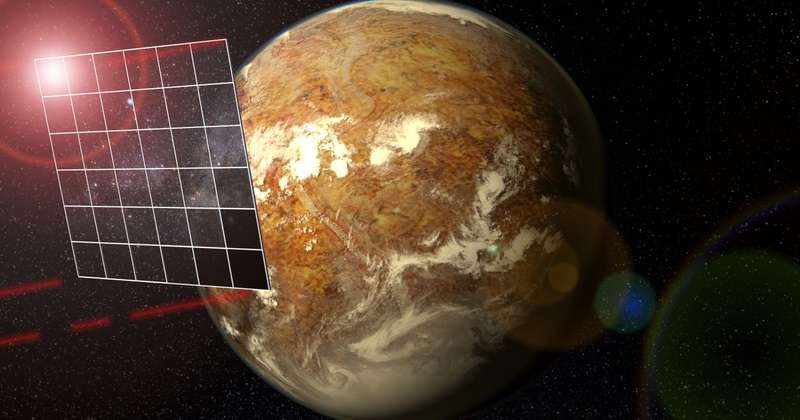Slowing down an interstellar spacecraft at Alpha Centauri

While one of the most important challenges for future interstellar travel is to how send a probe to another stellar system relatively quickly, another issue that needs to be resolved is how to successfully slow down such a spacecraft once it gets there. Recently, two German researchers have proposed a solution addressing this problem, presenting a method that could flawlessly decelerate an interstellar craft sent to the neighboring system Alpha Centauri.
Although the Alpha Centauri star system is located about 4.37 light years away from the Earth, there is a concept of sending a fleet of tiny spacecraft that could reach this system within 20 years. The initiative, known as Breakthrough Starshot, aims to develop an ultra-light light sail that can be accelerated to 20 percent of the speed of light, allowing a relatively fast travel time. However, as traveling with a velocity of about 133 million mph (215 million km/h) could result in overshooting the star, there is a need to develop a method ensuring the successful deceleration of such an interstellar probe.
That is why René Heller and Michael Hippke of the Max Planck Institute for Solar System Research in Göttingen, Germany, have lately studied a concept of slowing down a spacecraft at Alpha Centauri by utilizing the radiation and gravity of stars in this system. They are convinced that photon pressures of the stellar triple consisting of Alpha Centauri A, Alpha Centauri B, and Proxima Centauri can be used together with gravity assists to decelerate an incoming fleet of solar sail-based craft.
"I think our concept of slowing down interstellar spacecraft using the stellar photons might become part of a range of methods that at some point will be taken into account for real mission planning, like for Breakthrough Starshot or follow-up missions. So I would say we delivered one piece of the puzzle," Heller told Astrowatch.net.
The scientists refer to their technique as a photogravitational assist. It would allow multiple stellar flybys in the Alpha Centauri system and deceleration of a sail into a bound orbit. Moreover, it could also enable sample return missions to Earth.
According to a paper published by Heller and Hippke, the spacecraft's solar sail would be redeployed upon arrival so that it would be optimally decelerated by the incoming radiation from the stars. Furthermore, once at Alpha Centauri, the probe would not only be repelled by the stellar radiation, but it would also be attracted by the star's gravitational field. The calculations to test the feasibility of the method were based on a space probe weighing less than 100 grams in total mounted to a 100,000-square-meter sail.
In particular, the plan is to use the stellar pressure from star A to brake and deflect the probe toward Alpha Centauri B, where it would arrive after just a few days. Afterward, the sail would be slowed again and catapulted towards Proxima Centauri, where it would arrive after 46 years. Last year, an Earth-like planet was discovered orbiting Proxima Centauri, and such a decelerated probe could deliver crucial information about this nearby alien world.
"Photogravitational assists allow visits of three stellar systems and an Earth-sized potentially habitable planet in one shot, promising extremely high scientific yields," the paper reads.
Notably, the photogravitational assist could also be performed in our solar system. The scientists note that a spacecraft could be accelerated to interstellar velocities using solar photons rather than using additional expensive technologies such as ground-based laser launch systems.
"The sun as a star could equally well be used to steer a photon sail. Solar system missions would actually be a natural intermediate step to test the technologies before we step out to other stars," Heller said.
Currently, the researchers' work on improving their technique will save much of the flight time to the system with a full stop at Proxima b. This might actually put their concept into the horizon of a human lifetime. They also plan to extend their technique to other nearby stars.
Provided by Astrowatch.net




















